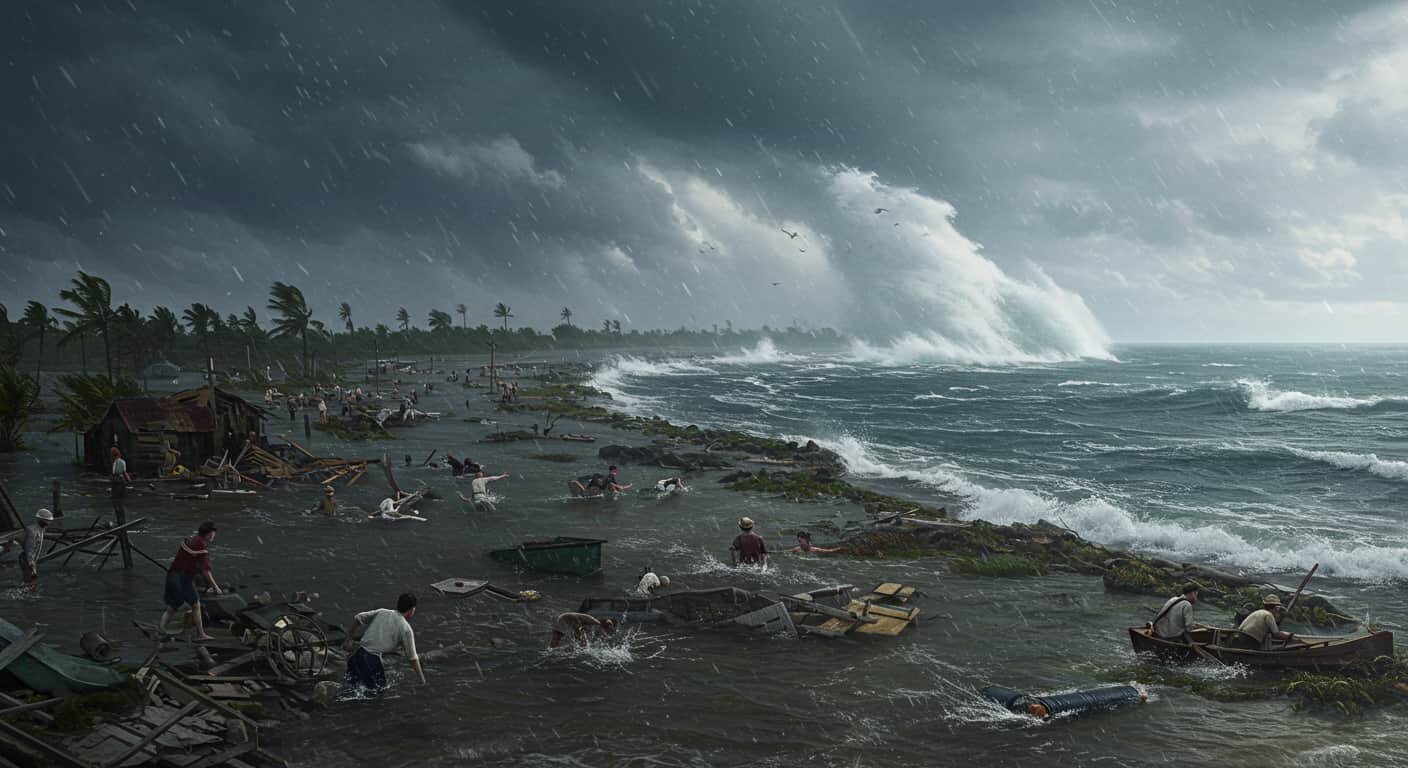
Newsletter Subscribe
Enter your email address below and subscribe to our newsletter

Enter your email address below and subscribe to our newsletter

A Monster Unleashed
On September 2, 1935, one of the most powerful hurricanes in U.S. history slammed into the Florida Keys with terrifying force. With winds exceeding 185 mph and a storm surge of 18-20 feet, the Category 5 hurricane obliterated entire islands, leaving a trail of destruction—and over 400 dead, including hundreds of World War I veterans sent there for work.
This was the Labor Day Hurricane, a storm so intense it still holds the record for the lowest barometric pressure (892 mb) ever recorded at U.S. landfall. But beyond the staggering statistics lies a tragedy of human error, failed rescues, and a storm so fierce it reshaped hurricane forecasting forever.
As part of FDR’s New Deal, about 300 World War I veterans were sent to the Florida Keys to build bridges and roads for the Overseas Highway. Many were homeless or jobless due to the Great Depression, and the government offered them work—but not safety.
Ernest Hemingway, who lived in Key West, was outraged. He wrote a scathing essay titled “Who Murdered the Vets?”, accusing the government of criminal negligence:
“Who sent nearly a thousand war veterans… to live in frame shacks on the Florida Keys in hurricane months?… The wind blew the water away and then the water came back.”
The public backlash led to congressional hearings, but no one was ever held accountable.
Today, a memorial in Islamorada stands in honor of the victims—many of them forgotten veterans who survived war, only to be abandoned in the face of a hurricane.
Modern forecasting might prevent such a high death toll, but with rising sea levels and stronger storms, the Keys remain vulnerable. The Labor Day Hurricane of 1935 wasn’t just a weather event—it was a failure of humanity. And its lessons must never be forgotten.